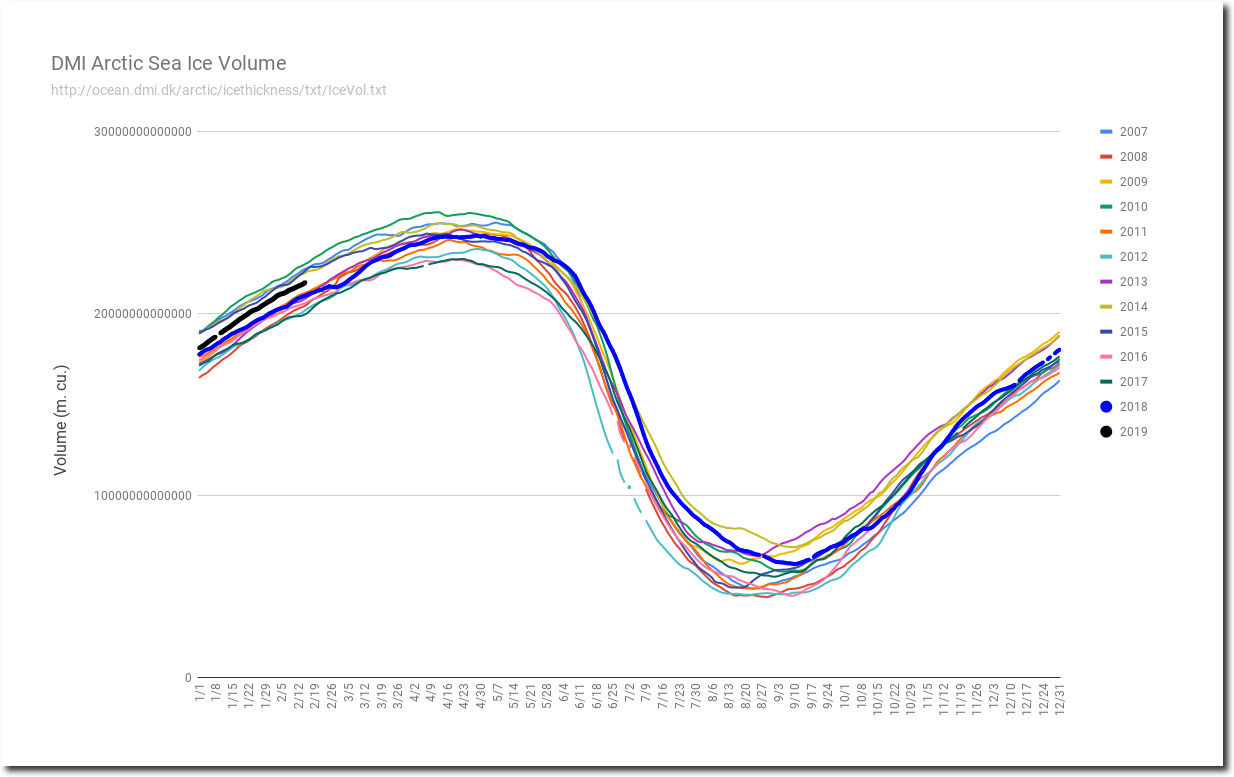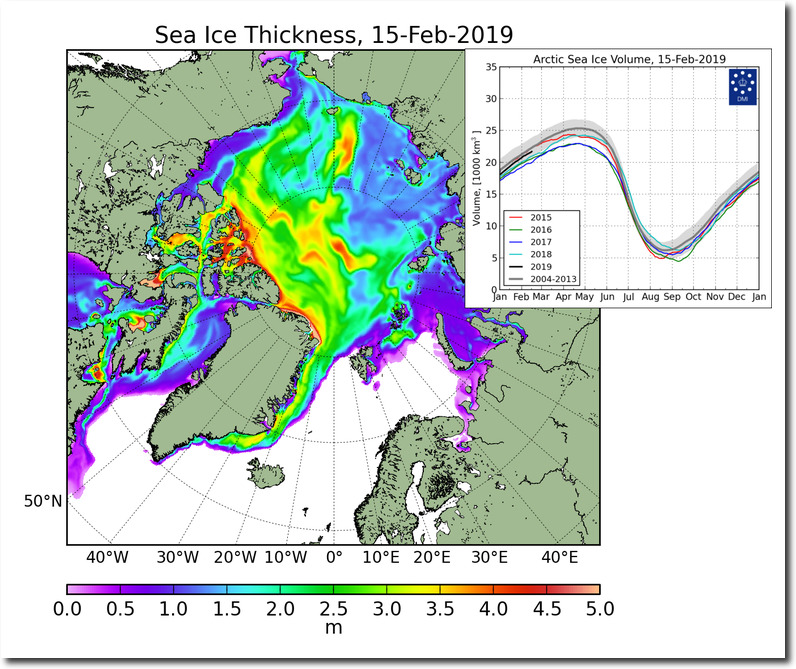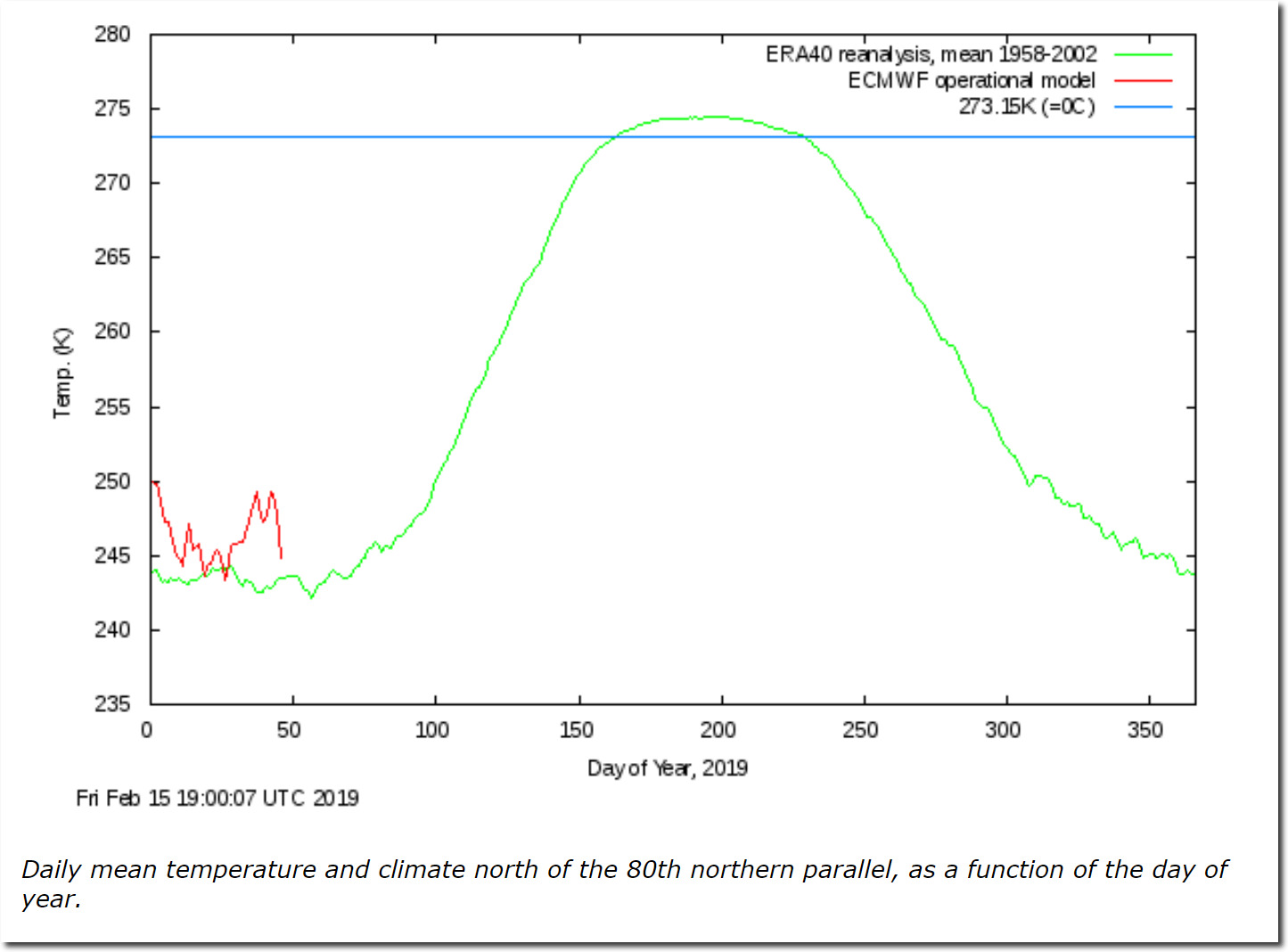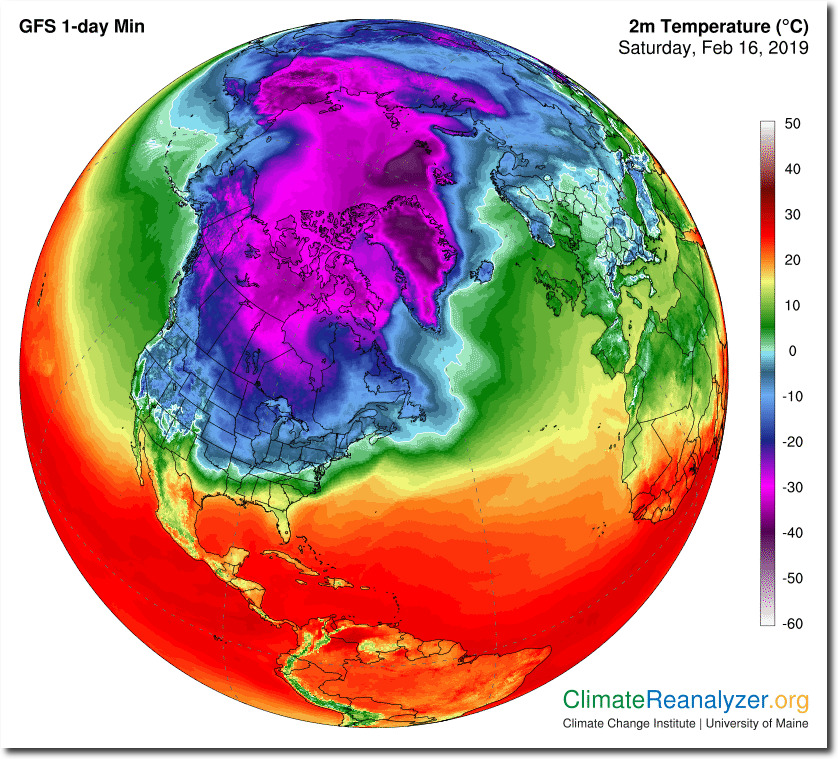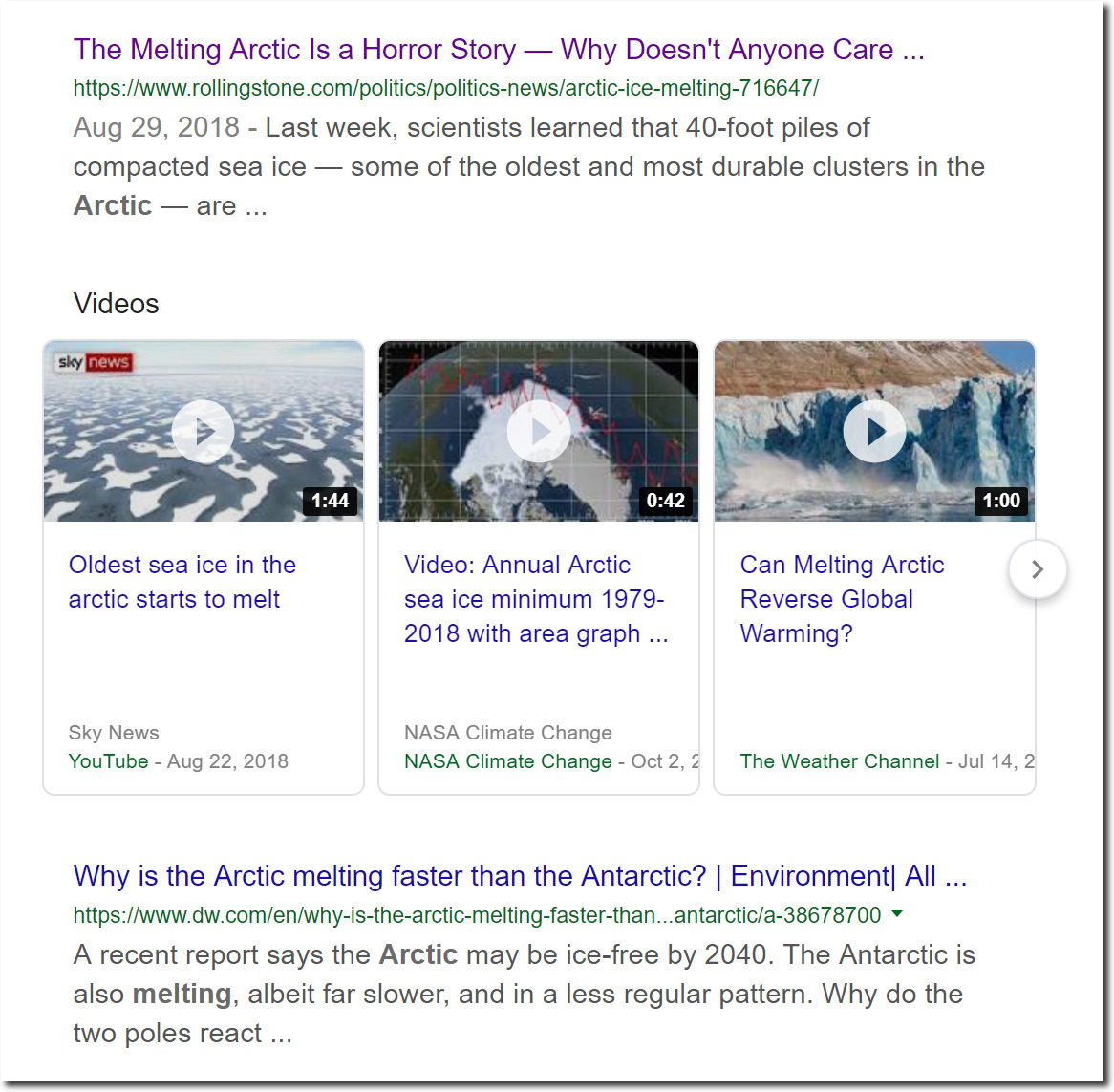Last year had the highest June Arctic sea ice volume since 2006, and this year is well ahead of last year.
Most of the Arctic is covered with ice more than two meters thick.
CICE_combine_thick_SM_EN_20190215.png (758×631)
Arctic winter temperatures are running close to the 1958-2002 mean.
Ocean and Ice Services | Danmarks Meteorologiske Institut
Temperatures are running around -30C from North Dakota to Siberia.
Meanwhile, “scientists say” the increase in ice is a “horror story of melting.”

